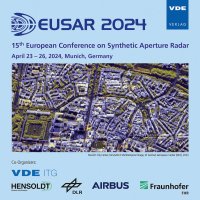Geostationary SAR: orbit design and optimization
Conference: EUSAR 2024 - 15th European Conference on Synthetic Aperture Radar
04/23/2024 - 04/26/2024 at Munich, Germany
Proceedings: EUSAR 2024
Pages: 6Language: englishTyp: PDF
Authors:
Monti, Matteo; Monti-Guarnieri, Andrea; Petrushevsky, Naomi; Prati, Claudio; Graziano, Daniela; Renga, Alfredo; Pelliccia, Francesca; Blasone, Giovanni Paolo; Montuori, Antonio
Abstract:
Geosynchronous SARs (GEOSAR), studied since the 1970s, are missions providing huge coverage, subcontinental access within minutes, and near continuous observation capabilities. Such missions are suited for imaging and interferometric applications, aiming at large-scale monitoring of deformations, water vapor, and soil moisture. However, maintaining the orbit tube for interferometric requirements is quite demanding due to the perturbing forces at the GEO altitude. Effective control strategies are imperative to keep the baseline and the Doppler band and, ultimately, the orbit shape stable in time. This study investigates the feasibility of the near-zero inclination geostationary SAR concept, considering both interferometric requirements and compliance with the International Telecommunication Union (ITU) Regulation. The orbit maintenance problem is addressed, emphasizing the potential for persistent Earth observation in SAR interferometry applications.


